C4.4 - Cell Cycle and Cellular Division
Overview
- all cells come from pre-existing cells
- conditions no longer favourable for abiogenesis
- two processes: mitosis and meiosis
- Reasons for Division
- healing
- tissue repair
- growth
- reproduction
The Cell Cycle
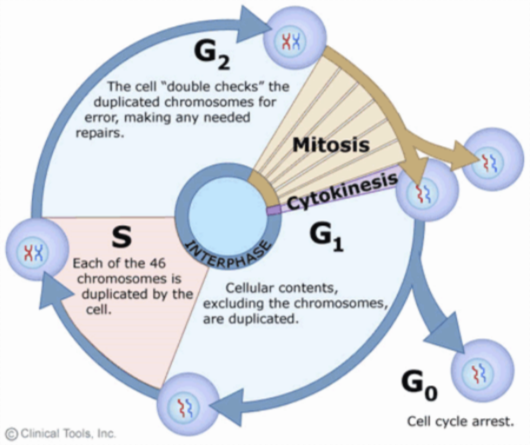
- life of cell divided into stages
- cell cycle divided into interphase and division
- interphase: phase involving cell growth, duplication of chromosomes, prep. for cell division
Interphase
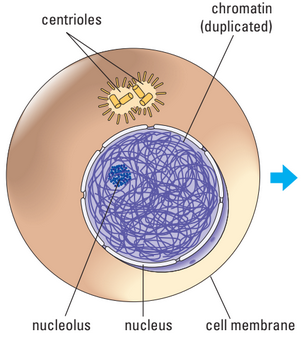
- cell may spend as much as 90% of cell cycle in interphase
- cell carries out metabolic processes and performs its reg. cellular activities
- G1 phase
- cell prep. for division by
- increasing protein supply
- creating more cytoplasmic organelles
- growing in size
- cell prep. for division by
- S phase
- S stands for DNA synthesis
- DNA of chromosomes duplicated
- chromatin: mass of DNA and protein
- chromatid: condensed chromatin fibers
- sister chromatid: two identical joined copies of chromatids
- centromere: region where 2 chromatids are joined tightly together
- G2 Phase
- G stands for gap
- cell “double checks” duplicated chromosomes for error
- makes any needed repairs
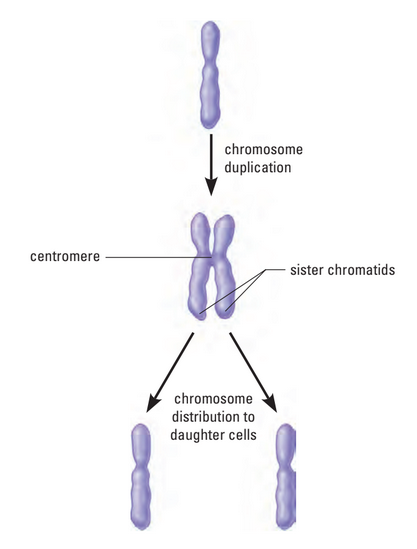
Mitosis (M Phase)
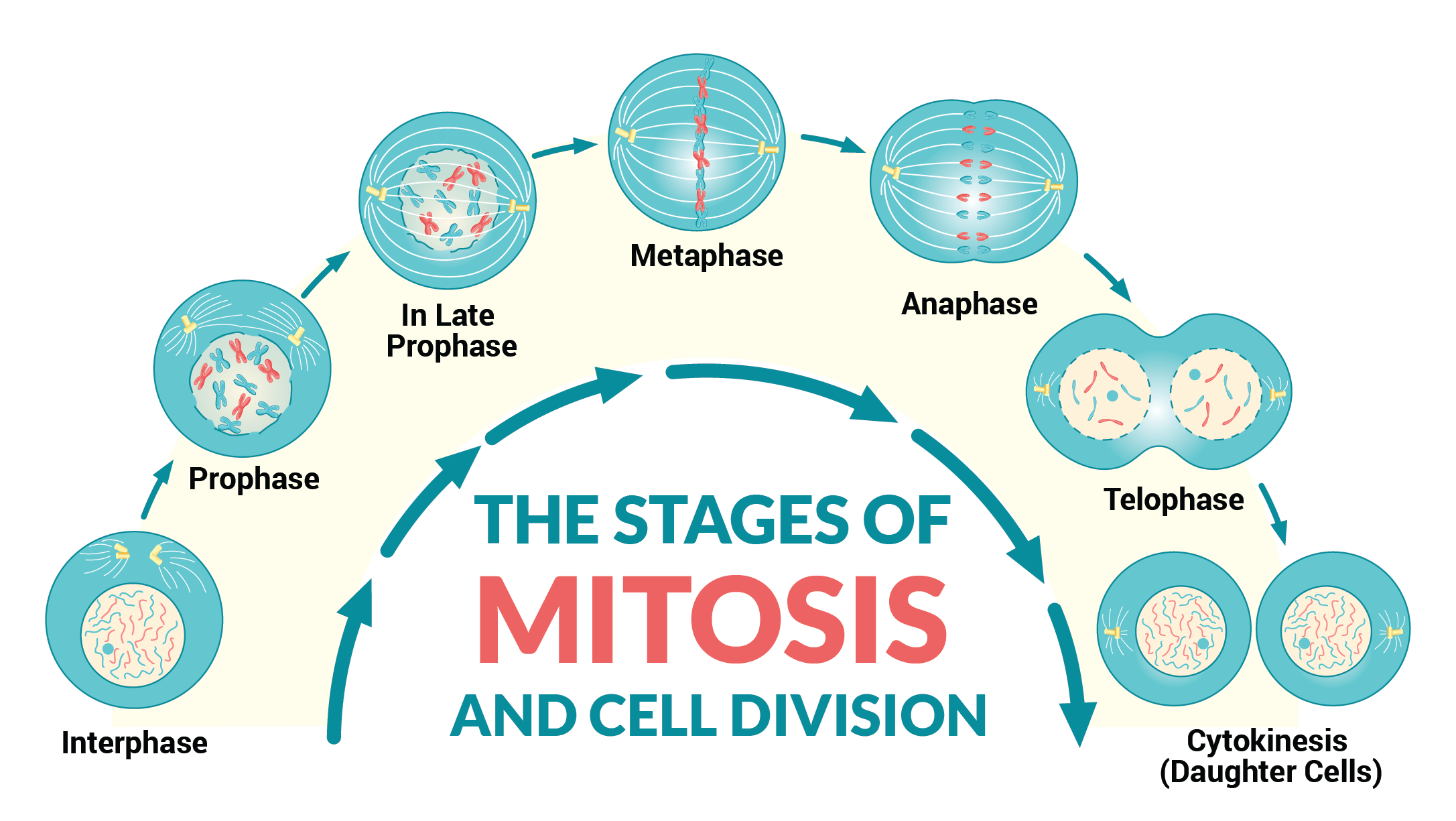
- mitosis: the stage of which the cell divides asexually
- asexual reproduction: reproduction of cells from one source
- Mother cell divides into two identical daughter cells
- Process found in unicellular and multicellular organisms
- somatic cells: body cells
- involves division of nuclear material
- nuclear materials contains chromosomes
- chromosomes: condensed DNA
- chromosomes contain 2 identical sister chromatids held together w/ a centromere
Prophase
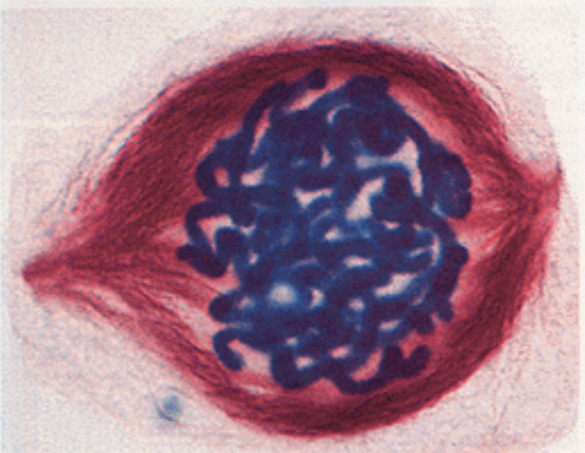
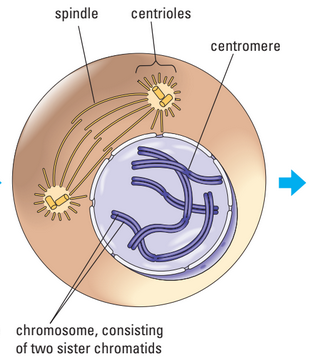
Early prophase, both images
- chromosomes shorten and thicken, becoming visible
- sister chromatids still connected
- nuclear membrane dissolves
- nucleolus disappears
- centriole: organelle in animal cell responsible for producing and handling spindle fibers
- centrioles migrate to opposite poles
- only in animal cells
- spindle fibres (a.k.a. microtubules) start to form
- sister chromatids attach to spindle fibers
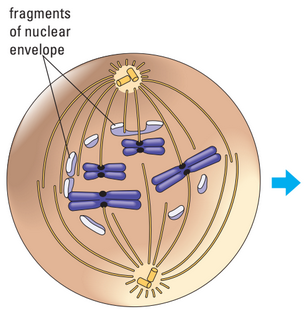
Late prophase
Metaphase
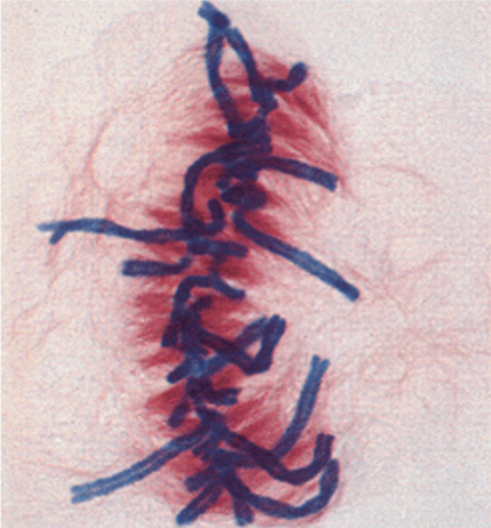
- spindle fibers fully attached to centromeres
- spindle fibers pull on chromosomes
- chromosomes line up in middle of cell (equator)
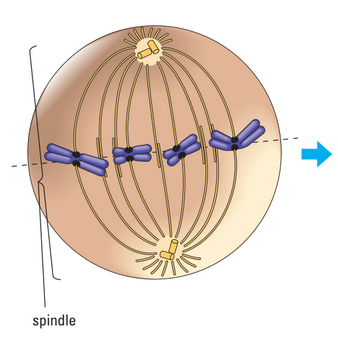
Anaphase
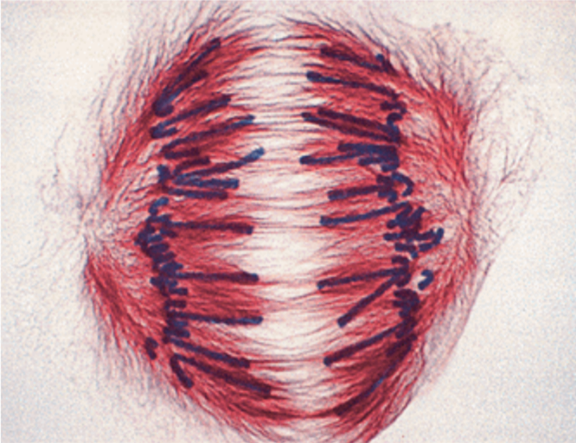
- spindle fibers pull chromosomes apart
- centromere splits and attached spindle fibers shorten
- pulls centromeres to opposite cell poles
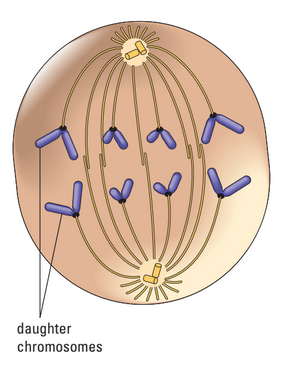
Telophase
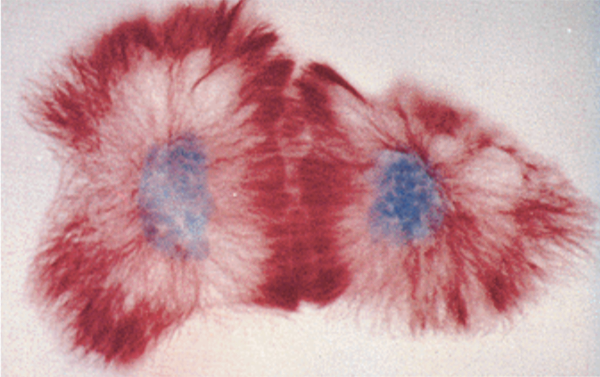
- chromatids reach opposite ends of cell
- chromosomes begin to uncoil and turn back into chromatin
- nuclear membrane reforms
- cytokinesis begins (usually w/ telophase)
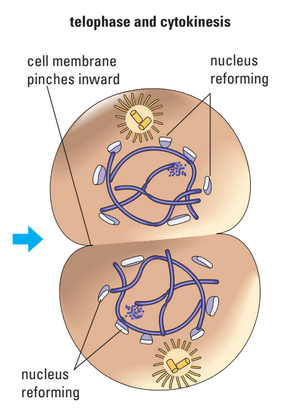
Cytokinesis (not part of M)
- cytokinesis: division of cytoplasm and organelles
- in animals, occurs along cleavage furrow
- ring of protein under plasma membrane contracts
- …making cleavage furrow deeper
- cleavage furrow: region between 2 splitting animal cells (refer to above diagram)
- in plants, cell wall forms via cell plate between 2 daughter cells
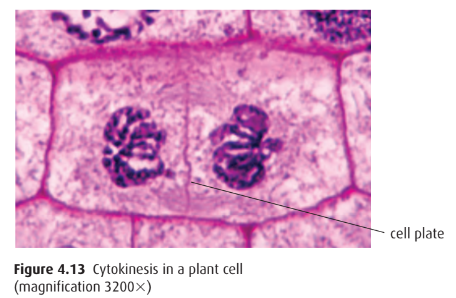
Errors in Mitosis
- mutations can disrupt normal process of mitosis
- mutations may arise through contact w/ carcinogens
- carcinogen: agents that cause cancer
- may incl. toxic chemicals
- radiation
- viruses
- oncogene: gene w/ potential to cause cancer
- if certain oncogenes are altered, mitosis spirals out control resulting in tumour that can be…
- benign tumour: non-cancerous tumour
- malignant tumor: cancerous tumour
- oncogenes may also cause protein synthesis to increase unregulated
Meiosis
- sexual reproduction: process in which 2 parents provide genetic material in order to produce offspring
- meiosis: form of cell division that produces 4 cells, each containing 1/2 the chromosomes as parent cell
- karyotype: display of all the chromosomes in a cell / individual (p. 108)
- many multicellular organisms, including humans reproduce sexually resulting in a combination of traits
- sex cells divide differently so that when a male and a female sex cell fuse,
- they have the correct number of chromosomes
Sex Cells (Gametes)
- gametes: male and female sex cells
- or haploid, 23 in humans
- zygote: fused cell (sperm + egg)
- or diploid, 46 in humans
- homologous chromosomes (a.k.a. homologs): chromosomes of each matching pair inherited from mother and father
- each member of pair carries same series of genes controlling same inherited traits
- diploid: two sets of chromosomes ()
- haploid: single set of chromosomes ()
- 2 cell divisions in meiosis
- Meiosis I
- Meiosis II
Meiosis I (Reduction)
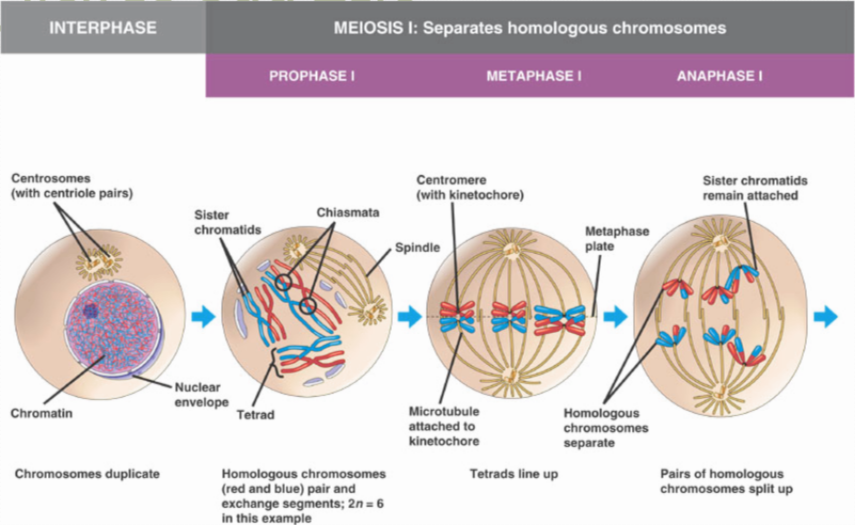
Interphase
Similar to mitosis
Prophase I
- most lengthy and complex phase
- homologous chromosomes line up
- each duplicated chromosome pairs w/ corresponding homologous chromosome
- result: tetrad
- tetrad: 4 chromatids
- homologs contain same genes but are not identical
- they may contain different alleles
- homologs then do genetic recombination
- genetic recombination: exchange of DNA segments between homologs
- independent assortment of originally maternal and paternal DNA
- independent assortment: way in which chromosomes distributes during meiosis (random)
Crossing Over
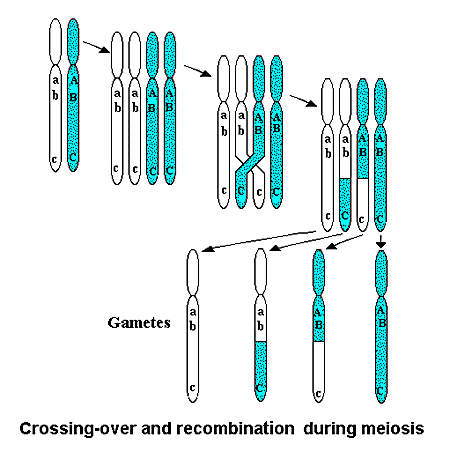
- crossing over: exchange of genetic material between homologs
- crossing over occurs contributing to genetic variation
- chiasmata: visual manifestations of crossovers
- Greek: crosses
Metaphase I
- spindle fibers attach to centromere
- homologous pairs pulled to equator where they line up together side by side
Anaphase I
- homologous chromosomes separate from tetrad and moves to opposite poles
- centromere does not divide as in mitosis
- sister chromatids remain attached at centromeres
- one chromosome from each pair now at each pole
Telophase I
- chromosomes uncoil
- spindle fibres disappear
- cytoplasm divides
- nuclear membrane reforms
- daughter cells diploid ()
- does not occur in all cells
- if not, cell goes directly into meiosis II
Meiosis II (Division)
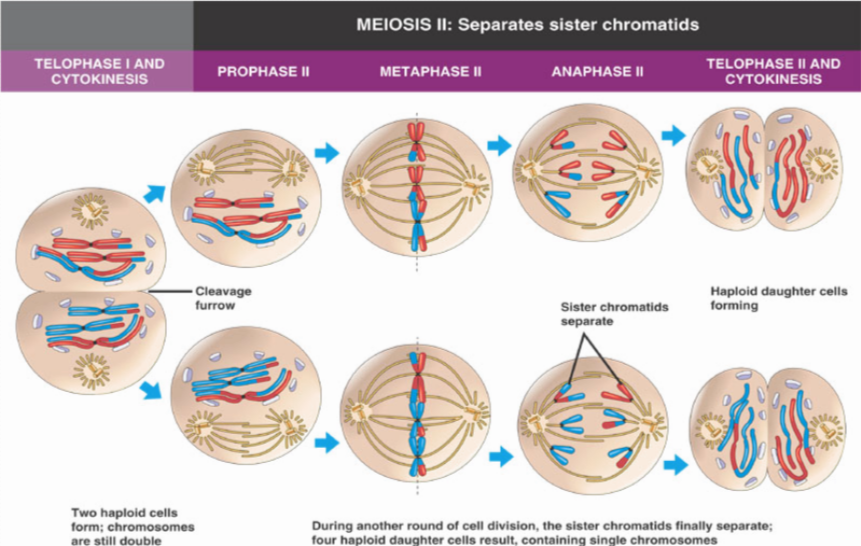
Interkinesis
- period of rest, some growth
- chromosomal duplication does not occur
Meiosis II
- identical to mitosis
- daughter cells divide again
- 4 haploid cells () results (gametes)
Errors in Meiosis
- nondisjunction: failure of chromosomes to separate properly during anaphase I or II
- result: chromosome may be added or deleted from a gamete
- can result in trisomy
- cause not fully known
- trisomy: zygote has extra chromosome (3 copies of particular chromosome)
- i.e. trisomy 21 or Down Syndrome
- Down syndrome: condition which individual carries extra copy of chromosome 21
- mild to severe developmental delays
- characteristic facial features
- below avg. height
- may also incl. heart defects and impaired immune sys.
- polyploidy: organisms contain >2 sets of chromosomes
- rare in animals
- i.e. seedless grapes and watermelon
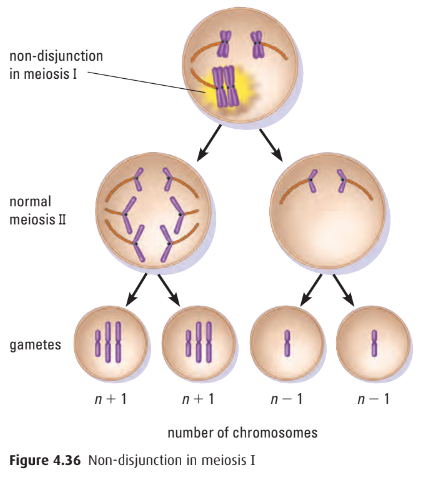
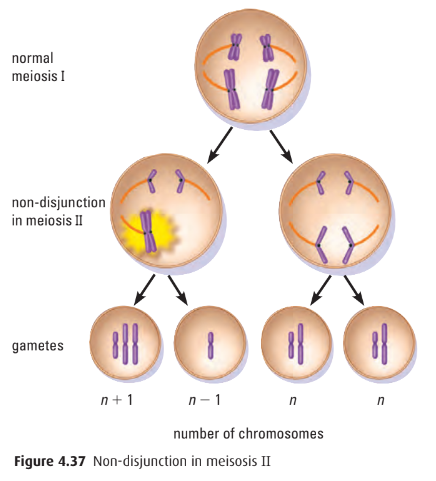
The chance of having a baby with Down syndrome increases w/ the mother’s age
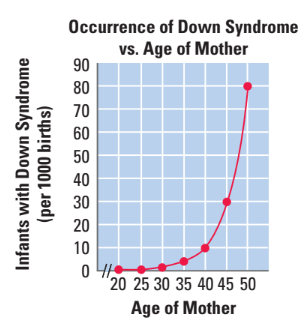
Changes in Chromosome Structure
- mutation: any change to DNA of cell
- may spontaneously occur at any stage of development
- may or may not produce viable offspring depending on degree or severity
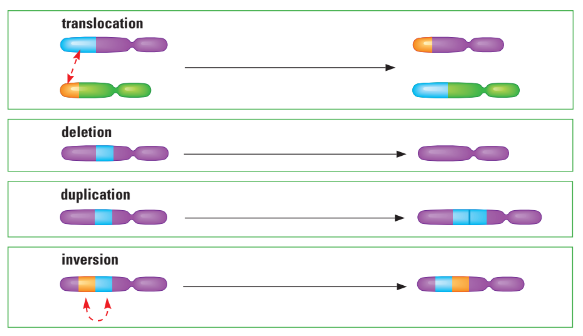
Deletion of Deficiency
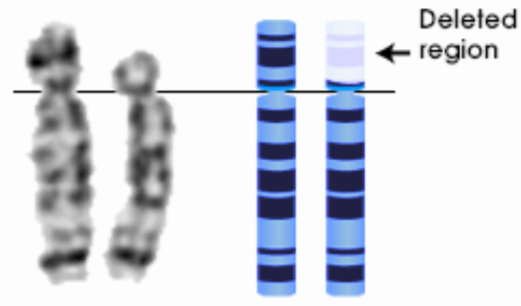
- deletion: portion of chromosome deleted
- causes: viruses, radiations, mutagens
- i.e. Cri du chat disorder
- seg. of chromosome 5 missing
- cancer cells often show chromosomal deletions
Duplication
- duplication: gene sequence repeats in one or several chromosomes
- i.e. Fragile X Syndrome
- duplication of genes in X chromosome
- results in mental impairment and autism-like symptoms
- affects 1/4,000 males and 1/8,000 females
- leading cause of inherited mental impairment
Inversion
- inversion: reversal of fragment of original chromosome
- 2 breaks occur in chromosome
- gene segment separates from chromosome and reinserts itself in reverse order
- generally viable and show no phenotypic abnormalities
Translocation
- translocation: fragment of one homolog attaches to nonhomologous chromosome
- 2 nonhomologous chromosomes exchange parts
- most common are reciprocal translocations
- one segment is exchanged directly with another
- i.e. semisterility
- half of gametes lethal to zygote
- i.e. Robertsonian translocation
- 5% of all Down syndrome individuals
- translocation Down syndrome
- translocation between chr. 21 and a14
- translocation of part of chromosome 14 and 21
- 5% of all Down syndrome individuals